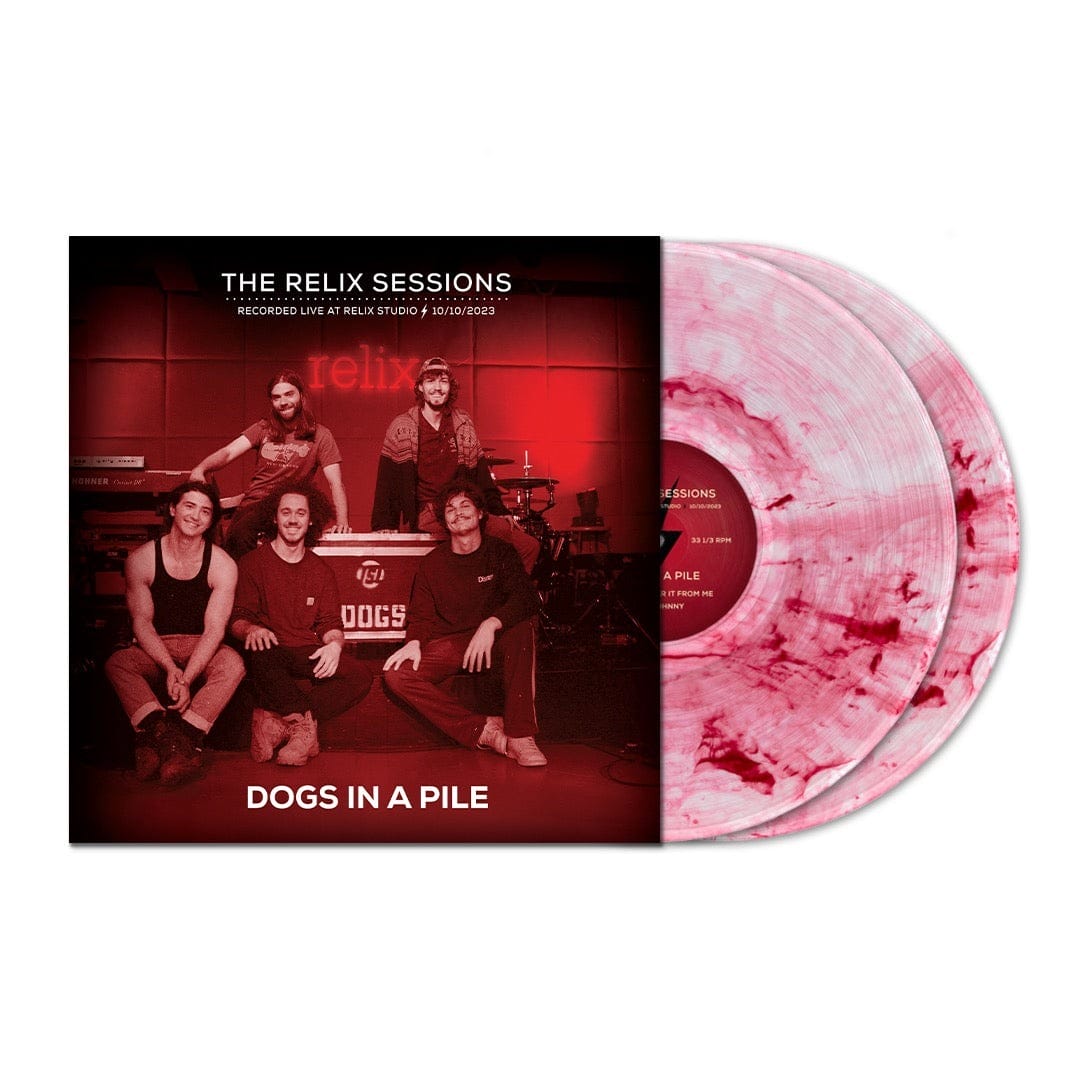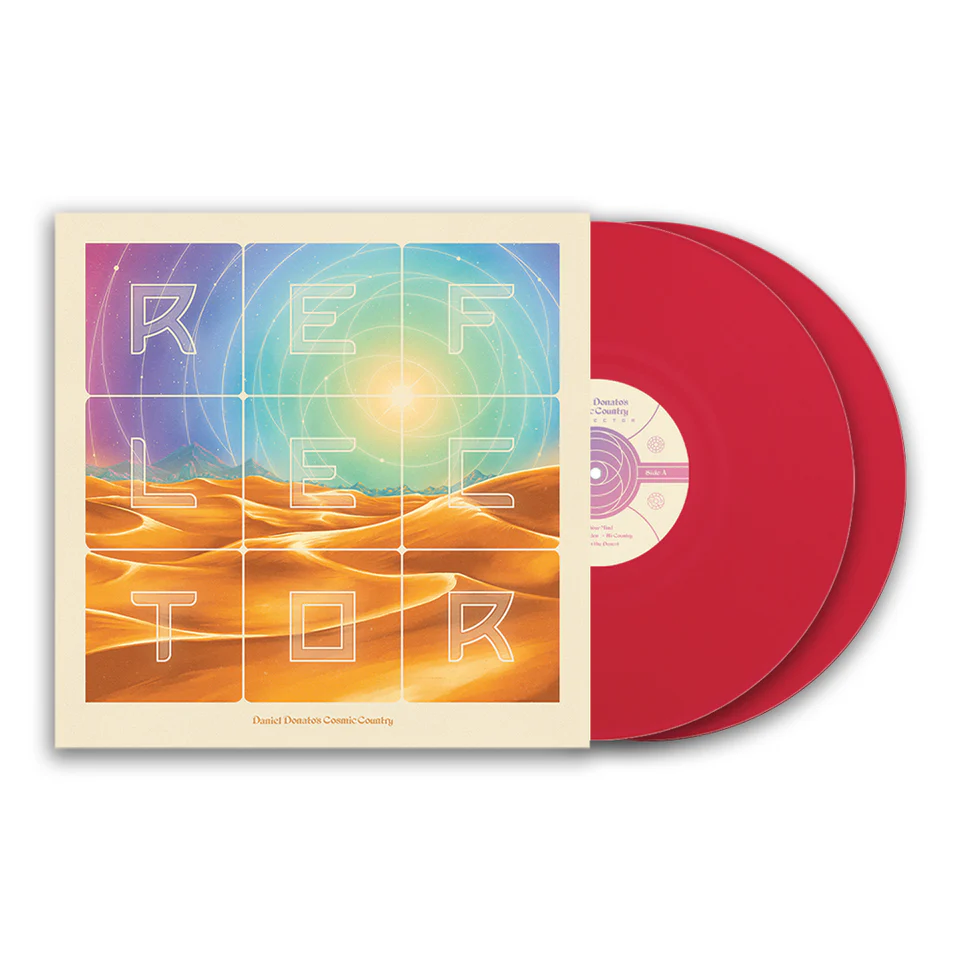Reel Time: Trey Anastasio Discusses _Traveler_

Photo by René Huemer
“The journey is a theme that lyrically runs through the record and, while the songs are certainly personal, it’s also a universal theme that many writers and artists have addressed through the centuries,” Trey Anastasio says of Traveler, his first solo studio album since Phish returned in 2009. Enlisting noted producer Peter Katis and members of the indie-rock community, Anastasio used the studio as an instrument – and created an album full of rich soundscapes and late-night halos.
When word first leaked that Anastasio was working with Katis, the Bridgeport, Conn.-based producer seemed like an unexpected choice for the Phish guitarist’s first album in more than four years. After all, Katis’ credits mostly include indie royalty like The National, Sigur Ros’ Jonsi, Interpol, Mercury Rev, Tapes ‘N Tapes and Tokyo Police Club. But as Anastasio explains, Katis actually has deep roots in the Phish scene, dating back to the ‘80s when his experimental group The Philistines Jr. first opened for Phish at the University of Vermont. Katis also produced and championed the alternative/punk Vermont band The Pants – some of the members played in the short-lived 1997 side-project New York! with Anastasio and Mike Gordon. (Their take on My Bloody Valentines’ “Only Shallow” should have shattered any indie/jam barriers years before the two genres started to blur at festivals across the country.) Though the band only made it through one gig, they introduced the future Phish numbers “Dirt” and “Saw It Again” to a live audience.
Of all the groups that Katis has worked with since graduating from college in 1989, there isn’t any act that he’s more closely associated with than The National, the Brooklyn-via-Ohio indie rock band. Since The National’s 2003 sophomore album Sad Songs for Dirty Lovers, he’s served as their engineer, producer, mixer and de facto sixth member – providing the band with the haunting soundscapes that have always made The National feel more like cerebral artists than moody punk rockers. He’s part of their extended family, too. When I interviewed Katis earlier this summer about another one of his clients, he brought up his work with the indie pop valedictorians on two separate occasions and also mentioned that The National guitarist Bryce Dessner also happened to be there spending time with his family. So it isn’t a surprise that The National drummer Bryan Devendorf was at Katis’ home studio one afternoon last fall when Anastasio came over to work on Traveler.
Though their jamband histories were a little more hidden at the time, most members of The National grew up in the improvisational world. One thing led to another and, before too long, Devendorf had recorded some tracks with Anastasio and invited the Phish guitarist to sit in with The National during their multi-night run at New York’s Beacon Theatre last fall. As the Traveler sessions progressed, Katis recruited a number of his pals for other sessions, including members of Mates of State, Bon Iver and even The National singer Matt Berringer, the only member of the band without a few jam-scene notches on his belt – though he almost raged a Phish show with his band at Deer Creek years ago.
“He listened to one song and then went and hid in the car,” Aaron Dessner, The National’s other guitarist, related to Relix and Jambands.com in 2009. “Matt can still not understand at all how any of us can stomach Phish but pretty much everyone else in the band grew up on their music.” “He agreed to go – well, maybe you could say he was dragged,” The National bassist and co-founder Scott Devendorf adds with a laugh. “He wasn’t ready for the culture of the whole thing and maybe not the music either.”
Despite his first Phish experience, Berringer played with Anastasio at the Beacon last fall and sang on the Anastasio/Tom Marshall Traveler song “Let Me Lie,” which Katis managed to rework as a quasi-The National number. He also found some common ground in longtime The National heroes Pavement, one of Anastasio’s biggest inspirations.
“Pavement was the soundtrack to the second half of the ‘90s for me,” Anastasio explains. “We were playing in Portland, Ore., I think it was the spring of 1994. I was wandering around town and came across this cool little record store and went in to look around. I asked the woman behind the counter if she had anything new that she liked, and she handed me Crooked Rain, Crooked Rain. I didn’t love it at first, but I remember thinking the first track sounded heartfelt. That was enough for me to want to play it again, after which I began to really hear the first track. I also began to notice the second track, and found myself gravitating to a couple others deeper in the record as well, like ‘Range Life’ probably, though at this point I didn’t even know what the songs were called. This process continued with each subsequent listen. The record just kept sounding better and better had a couple friends who felt the same way and we would quote lines to each other in the corner at parties. ‘him chim chim sing a song of praise, for your elders… They’re in the back. Pick out some Brazilian nuts, for your engagement… Check that expiration date man, it’s later than we think. Most of the people I hung out with didn’t really get what the big deal was, but to the friends I had who really liked Pavement at that point, it felt like we were in on a secret. What was I going to do, they were my favorite band.”
Trey with The National, Beacon Theatre, NYC 12/16/11
While Phish only covered Pavement once, the classic song “Gold Soundz” in 1999, many trace the band’s looser, more ambient approach to jamming during the late-‘90s back to Anastasio’s fascination with Pavement and fellow proto-indie rockers The Velvet Underground (longtime Phish inspirations Talking Heads are also a common link between many popular bands in the indie and jam genres). Likewise, Pavement producer Bryce Goggin shaped Phish albums Farmhouse and Round Room as well as many of Anastasio’s solo releases.
Especially after he moved to New York when Phish broke up in 2004, Anastasio’s tastes have gravitated further toward modern, progressive indie rock. He’s introduced TV on the Radio and Neutral Milk Hotel covers into Phish’s repertoire, and name-checked jam-inspired psych-rockers like MGMT and Animal Collective in interviews.
“I think the simple answer to that question would be that those are the bands that I actually listen to,” Anastasio explained to Relix in 2010. “Everything you just named, those are some of my favorites. You know when [Phish] started, considering we’ve been playing for 26 years, some of those classic rock bands were the bands that were our earliest influences and contemporary at the time. But I can’t say that I really listen to them much these days.”
Despite his indie cred, Katis has also worked with bands more closely aligned with the roots and jam scenes himself. For many years, he played in the hockey-themed group The Zambonies, who have worked the jam-friendly club circuit and performed with Guster numerous times over the years (members of The Zambonies play in the Hanukkah-inspired band The Leevees with Guster’s Adam Gardner). More recently, he’s worked with Dispatch and Caravan of Thieves.
More so than most of Phish’s recent work, Traveler marries Katis and Anastasio’s current indie-rock influences with both musicians’ rich background in orchestral rock and patient, layered soundscapes. While some have noted that Anastasio’s so-called “indie rock” album might bookmark a certain cultural period in his career – like the Dead’s disco days, The Rolling Stones’ psychedelic period and Bob Dylan’s gospel years – fans should know that Katis actually dreamed up Traveler on the way home from a Phish show. “Peter came to see Phish live,” Anastasio explains. “And he said, ‘What if we set out to make a record that people could pop on in their car on their way back from a concert or that they could throw on at 2 a.m., when they’re driving?’”
Traveler was produced by Peter Katis, who is best known for his work with The National and Jónsi. He also has a deep connection to The Pants, a band you have worked with in the past. How did you first come in contact with Peter and what initially drew you to his often soundscape-heavy production approach?
I’ve wanted to work with Peter for a while, for a number of reasons. I really like the Jónsi record and The National, The Grapes, The Pants and lot of records that he’s done. But part of the reason that I pay so much attention to what he’s done is because the two of us were at the University of Vermont together. He has a band called The Philistines Jr. and their first gig ever was at UVM with Phish. It was in a classroom in a dorm and there were about two people there!
Last fall, a window presented itself. Phish was off for several months while Page McConnell’s family welcomed a baby. I was at home in New York City, which is just a train ride from Peter’s home studio in Bridgeport, Conn., so I was able to work all day and be home with my family at night.
I wanted it to be cinematic, visual. He’s a master at creating a sonic landscape, but his sensibility is very low-fi and hi-fi at the same time. That’s important because with computers, you can get carried away and make a cold-sounding record and we didn’t want to do that. He kept encouraging me to make things raw and simple. That may not be the first thing that comes to mind when you hear the record, but he did encourage me to embrace a certain kind of simplicity that was powerful.“Clint Eastwood,” Terminal 5, NYC, 2/22/11
Word first started to spread about your new album when members of The National revealed that they were working on the project with you. Did you purposefully try to work with musicians outside your normal social circle on Traveler and how familiar were you with The National and Mates of States before you worked with them in Bridgeport, Conn.?
It was actually a healthy combination of old and new. I got to play with all my friends in TAB [Trey Anastasio Band], who are incredible and have been instrumental in developing these songs, and I got to play with all these new musicians whose work I admire so much. When I moved to New York eight or nine years ago, that was a big part of the appeal to me – to connect with other musicians, writers and artists here. A lot of the new musicians that ended up on the record are from the New York area. Rob Schwimmer, for example, lives right down the road from me. And Rob Moose, who is in Bon Iver and has his own great group, played on a lot of tracks and worked on the string arrangements with us.
Everyone in TAB was incredibly involved – they laid the foundation for most of the songs and brought their own unique touches. Jennifer [Hartswick], for example, just kills it on [Gorillaz’s] “Clint Eastwood.” She was sitting on the floor and we handed her a microphone and she ripped that thing off in one take. That track shows off Tony [Markellis] and Russ [Lawton], too. They are masters of the slow and low. If you listen to the bass line, it’s pretty epic. I was a little bit hesitant because it’s such an iconic song to cover, but Peter saw TAB do it live and said, “we’ve gotta do that tune.”
Tom [Marshall] and I wrote five songs for the album. We’ve been making four-tracks, eight-tracks and 16-tracks of songs together for our entire lives – but this is the first record that he appears on, which was fun for both of us. He sang backup on “Traveler” and “Pigtail” and he played keys on “Traveler.” It’s one high, beautiful note that goes on for about a minute and a half. He played it on an arp going through a tremolo machine.
Steve [Pollak, aka The Dude of Life] and I also wrote a song for the record. He works with autistic kids and there’s a line in “The Architect” that says a lot to me about Steve: “and if you get a chance, watch the young children dance, in a little while, you will see them smile.” When we were writing, he told me: “Seriously, as a grown-up, you get so hung up and you’re pacing down the street at a million miles an hour, looking at your iPhone. But I stand there and I watch these kids and they just start dancing. And after about two minutes they all start smiling and laughing – and everything seems really simple to me in that moment.”
In recent interviews, you have mentioned that you “write to write” instead of writing for a specific project or band. Given that Traveler is more of a studio experiment than a traditional album, how fully realized were these songs before you entered the studio? Did you hold any songs back from your live show in order to give them a clean slate in the studio?
I don’t really hold anything back – it all intermingles and the songs evolve. “Let Me Lie” is probably a good example. Tom and I wrote that one and I’ve played it live with Phish, TAB and even on last year’s orchestral tour. It basically appeared in demo form on Bar 17 and on Phish’s Party Time, which was the B-side album we made during the Joy sessions. But I was still looking for the definitive rock band arrangement and it just came together when we were making Traveler_. It has [The National’s] Bryan Devendorf on drums, [Mates of State’s] Kori Gardner and [The National’s] Matt Berninger on background vocals, Rob Moose on strings, [touring The National member] Thomas Bartlett on keyboards, Samuli Kosminen on percussion, and me on bass and guitar.
In advance press material for this album, you mention that you hope to use the studio as an instrument and create a non-traditional studio album. Can you talk a little bit about this approach and how it differs from some of your other non-traditional studio albums such as Story of the Ghost or Surrender to the Air ?
I wanted to make a record that was a sonic sculpture. Peter and I kept digging and digging for more sonic colors on every song. I might come in with a simple guitar line, a little, teeny pattern in the background of a song. And he would tell me to go out and play it again on the vibes. And then, he’d have me play it on the celesta and then, high-octave piano. He would stack these things and then, shape and mold them. So when you listen to the record, there’s an incredible amount of depth, sometimes to simple lines. We wanted every single sound on the record to be incredibly unique, rich and colorful.
You have mentioned that you hoped Traveler had a cinematic quality. You have also spent a good portion of the past 18 months composing material for a Broadway play. Do you feel that your recent musical theater work has influenced Traveler and your other recent solo work?
I’ve learned so much from it. I think it’s certainly influenced my other work and vice versa. As a matter of fact, when I went and did the Hands on a Hardbody demos up at the Barn, I was definitely using some of Peter’s sonic riffs.
A few songs from Hands on a Hard Body and your 2010 solo tour made their way into Phish’s live set. At what point do you decide a song should move into the band’s repertoire versus keeping it for one of your non-Phish projects?
Sometimes these things have a life of their own. A lot of songs that have started out in TAB ended up being big giant Phish songs – “First Tube,” “Gotta Jibboo,” “Sand,” “Bug” and “Heavy Things.” This process has been around as long as there’s been a Phish, so I don’t think about songs being for one band or another at this point. To me, they’re songs for everybody to play.
The title of your new album is Traveler. Is the album’s title a reference to your own life on the road or your journey in the studio?
The journey is a theme that lyrically runs through the record and while the songs are certainly personal, it’s also a universal theme that many writers and artists have addressed through the centuries. But I also saw it as having a more literal meaning. Peter came to see Phish live and I remember saying: “What if we set out to make a record that people could pop on in their car on their way back from a concert or that they could throw on at 2 a.m. when they’re driving?” I wanted it to be cinematic, visual.



















